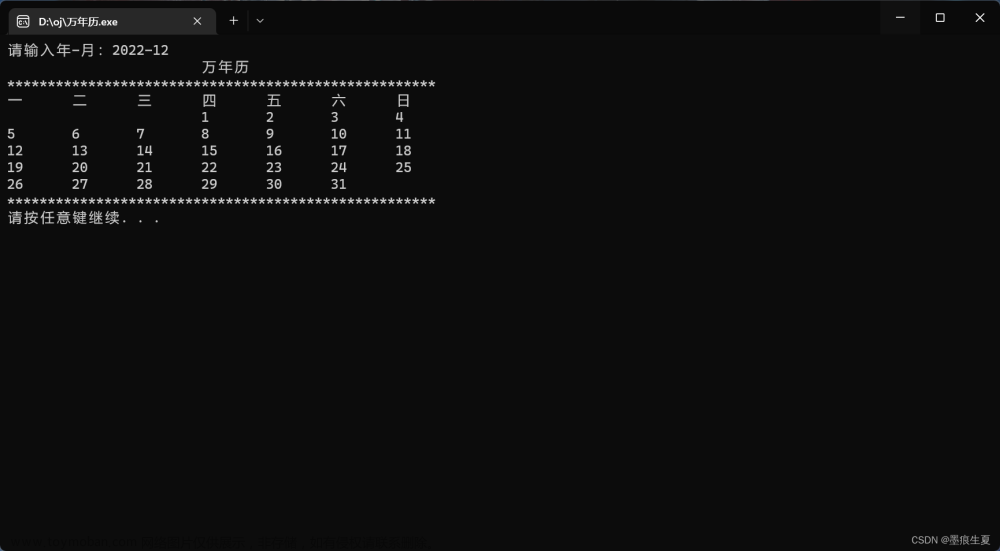原创比较累,希望大家能点点赞,对我的支持。你们的支持,就是我的动力。
1. 接口实现
在 Go 中,接口是一种抽象类型,它定义了一组方法签名,但没有实现。接口用于描述对象应该具有的方法集合,而不是具体的实现方式。
接口的定义使用 `type` 和 `interface` 关键字。例如:
type MyInterface interface {
Method1() int
Method2(string) string
}
上面的代码定义了一个名为 `MyInterface` 的接口,它包含两个方法 `Method1` 和 `Method2`,一个返回 `int` 类型,另一个返回 `string` 类型。
接口的实现是通过创建实现了接口中所有方法的具体类型来完成的。在 Go 中,一个类型只要实现了接口中定义的所有方法,就被认为是实现该接口的类型。例如:
type MyStruct struct {
// ...
}func (s MyStruct) Method1() int {
// ...
}func (s MyStruct) Method2(str string) string {
// ...
}var myVar MyInterface = MyStruct{}
上面的代码定义了一个名为 `MyStruct` 的结构体,并实现了 `MyInterface` 接口中定义的 `Method1` 和 `Method2` 方法。然后,我们创建了一个类型为 `MyInterface` 的变量 `myVar`,并将它设置为 `MyStruct` 的实例。由于 `MyStruct` 实现了 `MyInterface` 中定义的所有方法,因此它被认为是实现了 `MyInterface` 接口的类型,可以被赋值给 `MyInterface` 类型的变量。
需要注意的是,Go 中的接口是隐式实现的,也就是说,类型不需要显式声明它实现了哪个接口,只要实现了接口中定义的所有方法即可。这种灵活性使得 Go 中的接口非常强大和易于使用。
下面是一个用Go 接口实现的工厂模式代码:
package main
import "fmt"
type Product interface {
GetName() string
}
type ProductA struct {}
func (p *ProductA) GetName() string {
return "ProductA"
}
type ProductB struct {}
func (p *ProductB) GetName() string {
return "ProductB"
}
type Factory interface {
CreateProduct() Product
}
type FactoryA struct {}
func (f *FactoryA) CreateProduct() Product {
return &ProductA{}
}
type FactoryB struct {}
func (f *FactoryB) CreateProduct() Product {
return &ProductB{}
}
func main() {
factoryA := new(FactoryA)
productA := factoryA.CreateProduct()
fmt.Println(productA.GetName())
factoryB := new(FactoryB)
productB := factoryB.CreateProduct()
fmt.Println(productB.GetName())
}在这个示例代码中,我们定义了一个Product接口,它包含一个GetName方法。然后我们定义了两个实现了Product接口的结构体:ProductA和ProductB。接下来,我们定义了一个Factory接口,它包含一个CreateProduct方法返回一个Product实例。我们实现了两个工厂结构体:FactoryA和FactoryB,它们实现了Factory接口并分别返回一个ProductA和ProductB实例。最后在main函数中,我们可以通过调用不同的工厂实例的CreateProduct方法来创建不同的Product实例,并通过GetName方法获取各自的名称。
2. interface 是一种特殊的类型,它可以表示任何类型的值
在 Golang 中,interface 是一种特殊的类型,它可以表示任何类型的值。使用 interface,我们可以在一个函数或方法中处理各种类型的值,而不需要知道值的具体类型。
要将 interface 类型转换为其具体类型的对象,我们可以使用类型断言 (type assertion)。类型断言的语法如下:
value, ok = expression.(T)
其中,`expression` 是一个接口类型的值。`T` 是要将其转换为的具体类型。如果转换成功,那么 `value` 是转换后的值,`ok` 是 true。如果转换失败,那么 `value` 是类型 `T` 的零值,`ok` 是 false。
下面是一个用于将 interface 类型转换为其具体类型的示例代码:
package main
import "fmt"
type Animal interface {
Sound() string
}
type Dog struct{}
func (d Dog) Sound() string {
return "Woof!"
}
type Cat struct{}
func (c Cat) Sound() string {
return "Meow!"
}
func main() {
var animal Animal
// create a dog object and assign it to the interface variable
animal = Dog{}
dog, ok := animal.(Dog)
if ok {
fmt.Println(dog.Sound()) // output: Woof!
}
// create a cat object and assign it to the interface variable
animal = Cat{}
cat, ok := animal.(Cat)
if ok {
fmt.Println(cat.Sound()) // output: Meow!
}
}
文章来源:https://www.toymoban.com/news/detail-451042.html
在上面的代码中,我们定义了 `Animal` 接口,并为其定义了两种实现:`Dog` 和 `Cat`。在 `main()` 函数中,我们创建了一个名为 `animal` 的 `Animal` 类型的变量,并先后将 `Dog` 和 `Cat` 对象分配给它。然后我们使用类型断言将值转换为 `Dog` 和 `Cat` 类型的变量。 通过此方法,我们可以从接口变量中提取出具体类型并对其进行操作。 文章来源地址https://www.toymoban.com/news/detail-451042.html
到了这里,关于Golang 接口(interface)的文章就介绍完了。如果您还想了解更多内容,请在右上角搜索TOY模板网以前的文章或继续浏览下面的相关文章,希望大家以后多多支持TOY模板网!





![【Golang】Golang进阶系列教程--为什么 Go 不支持 []T 转换为 []interface](https://imgs.yssmx.com/Uploads/2024/02/616675-1.png)





